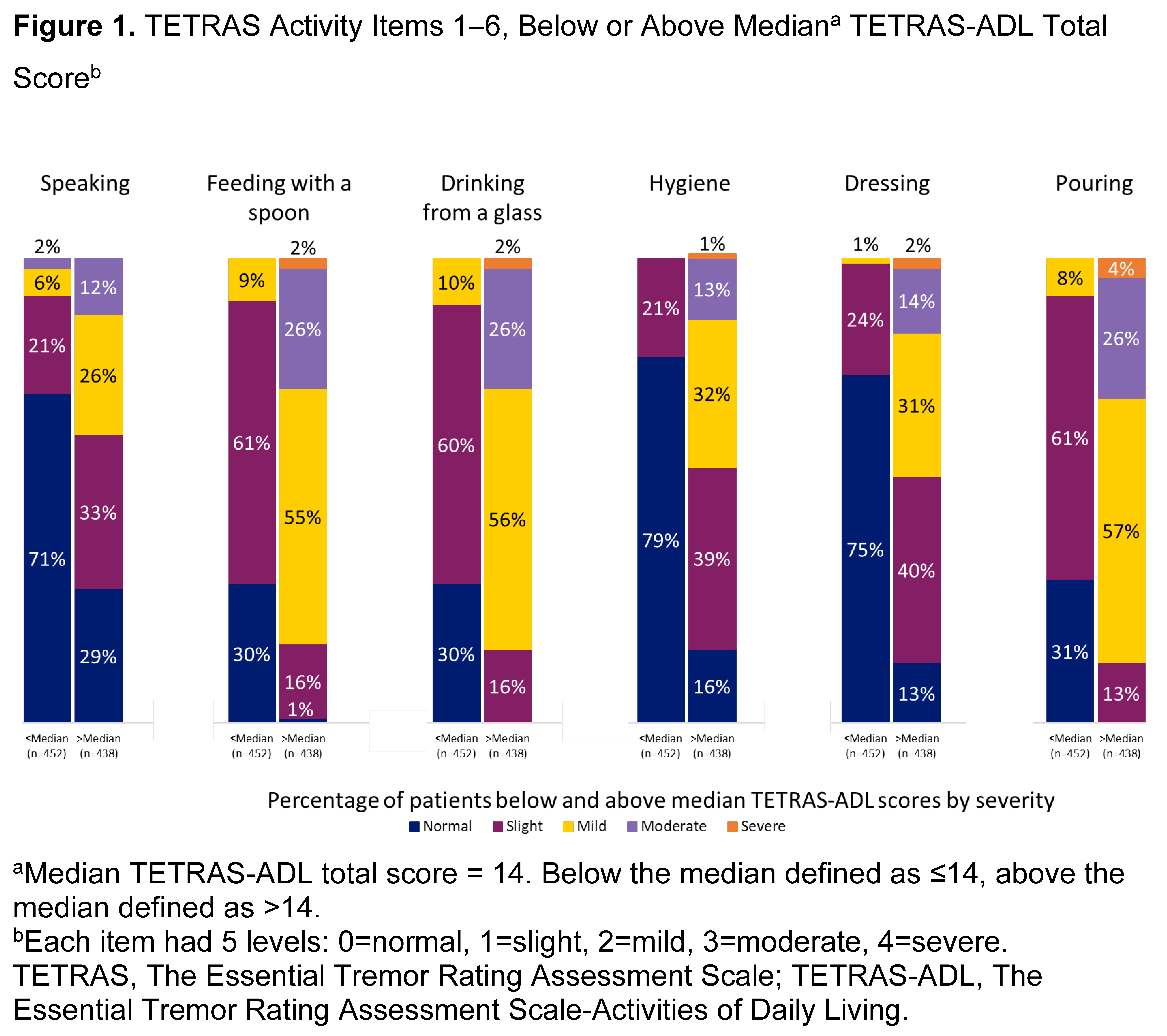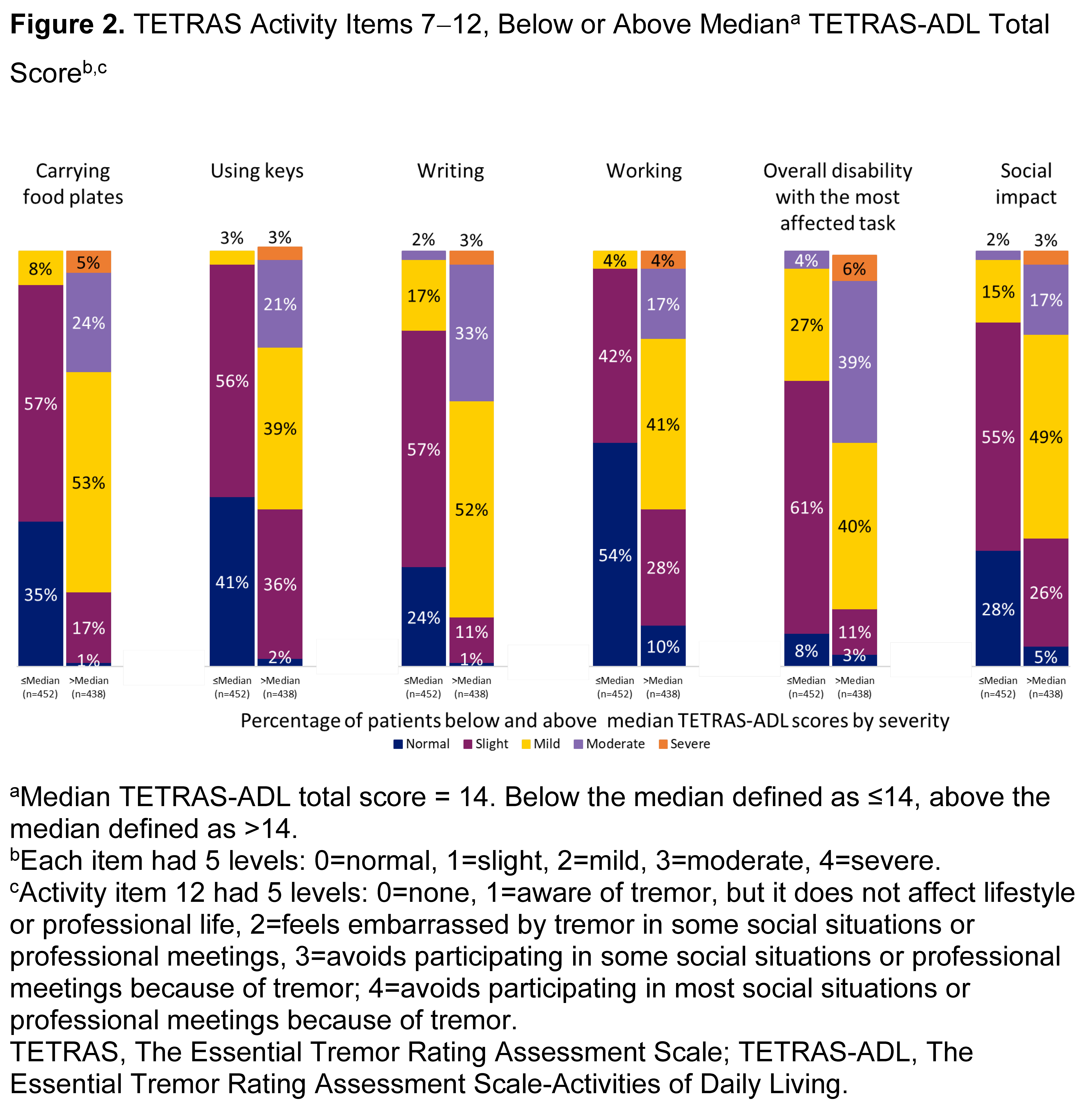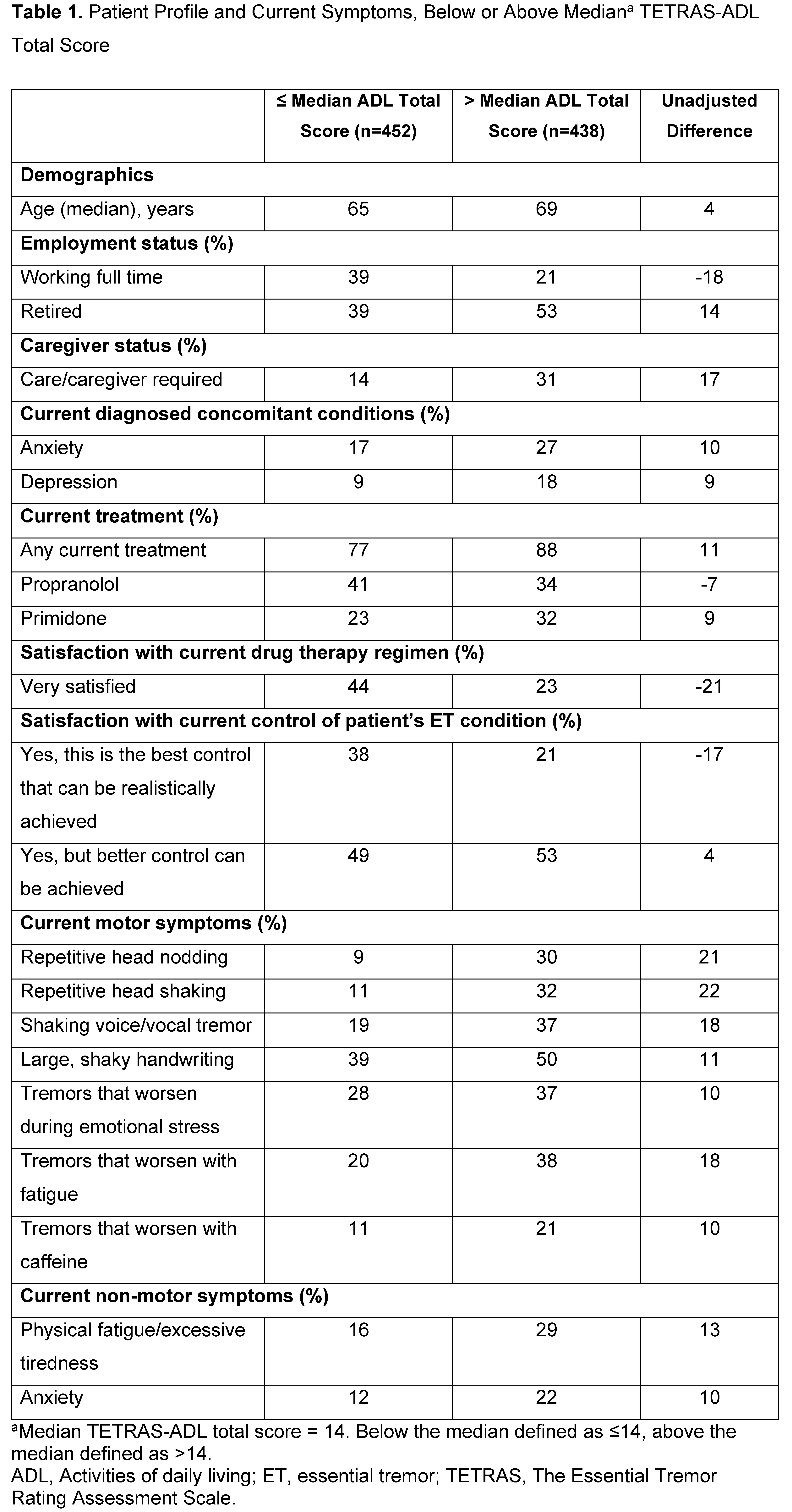Category: Tremor
Objective: To describe the impact of tremor on activities of daily living (ADL) and treatment satisfaction in patients with essential tremor (ET).
Background: ET, a movement disorder characterized by action tremor in the upper limbs, affects ADLs such as handwriting, eating, dressing, and self-care.[1] The TETRAS-ADL, a clinician-reported outcome assessment tool, is used to evaluate functional impairment evidenced by impact on ADLs in ET.[2] There is a need to better understand functional impairment using TETRAS-ADL scores in a real-world ET population that might be treated using currently available treatments such as primidone and propranolol.[3]
Method: Data were collected from physician-completed patient record forms for patients with an ET diagnosis in the US. Descriptive analyses were performed for patient demographics, disease burden, medication treatment satisfaction, and TETRAS-ADL scores. Data were stratified to describe those below (≤ median) or above (> median) the median TETRAS-ADL total score; higher scores indicate greater impact on ADL.
Results: Between March and August 2021, data were collected from 40 primary care physicians and 60 neurologists. Median (IQR) TETRAS-ADL total score was 14 (9, 21). Overall, 452 patients were below the median and 438 above. Physicians reported that a higher proportion of patients below the median total score were full-time workers (39%) vs those above (21%), were very satisfied with current treatment (44% vs 23%), and currently used propranolol (41% vs 34%); while a higher proportion of patients above the median required a caregiver (31%) vs those below (14%), were on a current treatment (88% vs 77%), and used primidone as a current treatment (32% vs 23%) [table1]. Additionally, in those with a TETRAS-ADL score above the median, the proportion of patients with scores of 3 or 4, which represent greater impairment from tremor, was higher across all items vs those below the median [figure1] [figure2].
Conclusion: These data indicate that a high proportion of patients with total scores above the median on the TETRAS-ADL have lower treatment satisfaction, higher disease burden, and greater functional impairment. This study underscores the need for treatment options that reduce impact of tremor on ADLs in ET.
Figure 1
Figure 2
Table 1
References: 1. Heldman DA, et al. Parkinsonism Relat Disord. 2011;17(7):537-542.
2. Elble RJ. J Neurol Neuromed. 2016;1(4):34-38.
3. Shah C, et al. Tremor Other Hyperkinet Mov (N Y). 2022;12:10.
To cite this abstract in AMA style:
T. Saifee, L. Barbato, J. Lin, A. Sillah, M. Baladi, S. Thomas, A. Gillespie, L. Harrison, S. Shah. Evaluation of Functional Impairment and Treatment Satisfaction in Patients With Essential Tremor: a Cross-Sectional Study of Physicians Using Real-World Data [abstract]. Mov Disord. 2024; 39 (suppl 1). https://www.mdsabstracts.org/abstract/evaluation-of-functional-impairment-and-treatment-satisfaction-in-patients-with-essential-tremor-a-cross-sectional-study-of-physicians-using-real-world-data/. Accessed December 28, 2025.« Back to 2024 International Congress
MDS Abstracts - https://www.mdsabstracts.org/abstract/evaluation-of-functional-impairment-and-treatment-satisfaction-in-patients-with-essential-tremor-a-cross-sectional-study-of-physicians-using-real-world-data/



